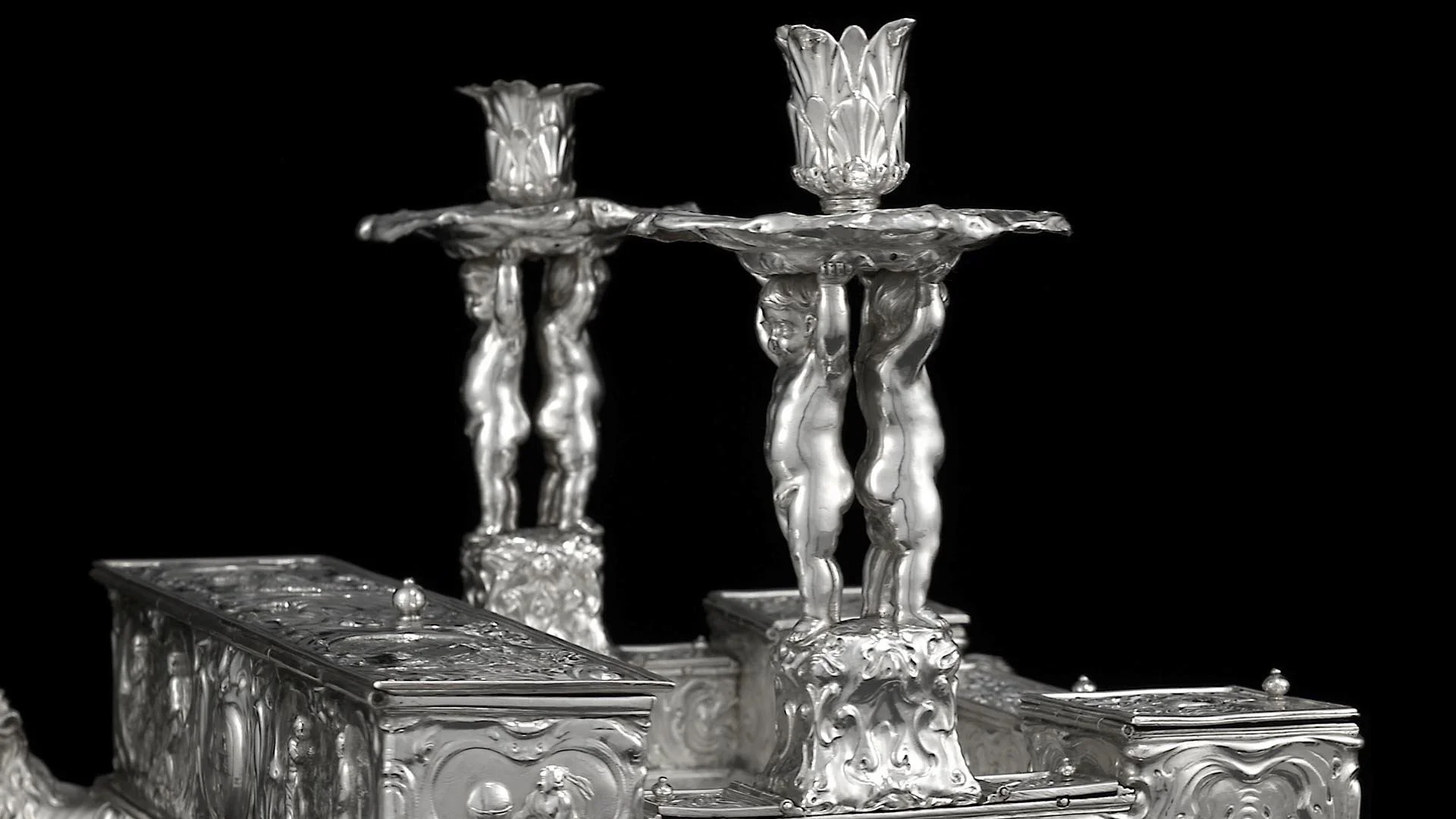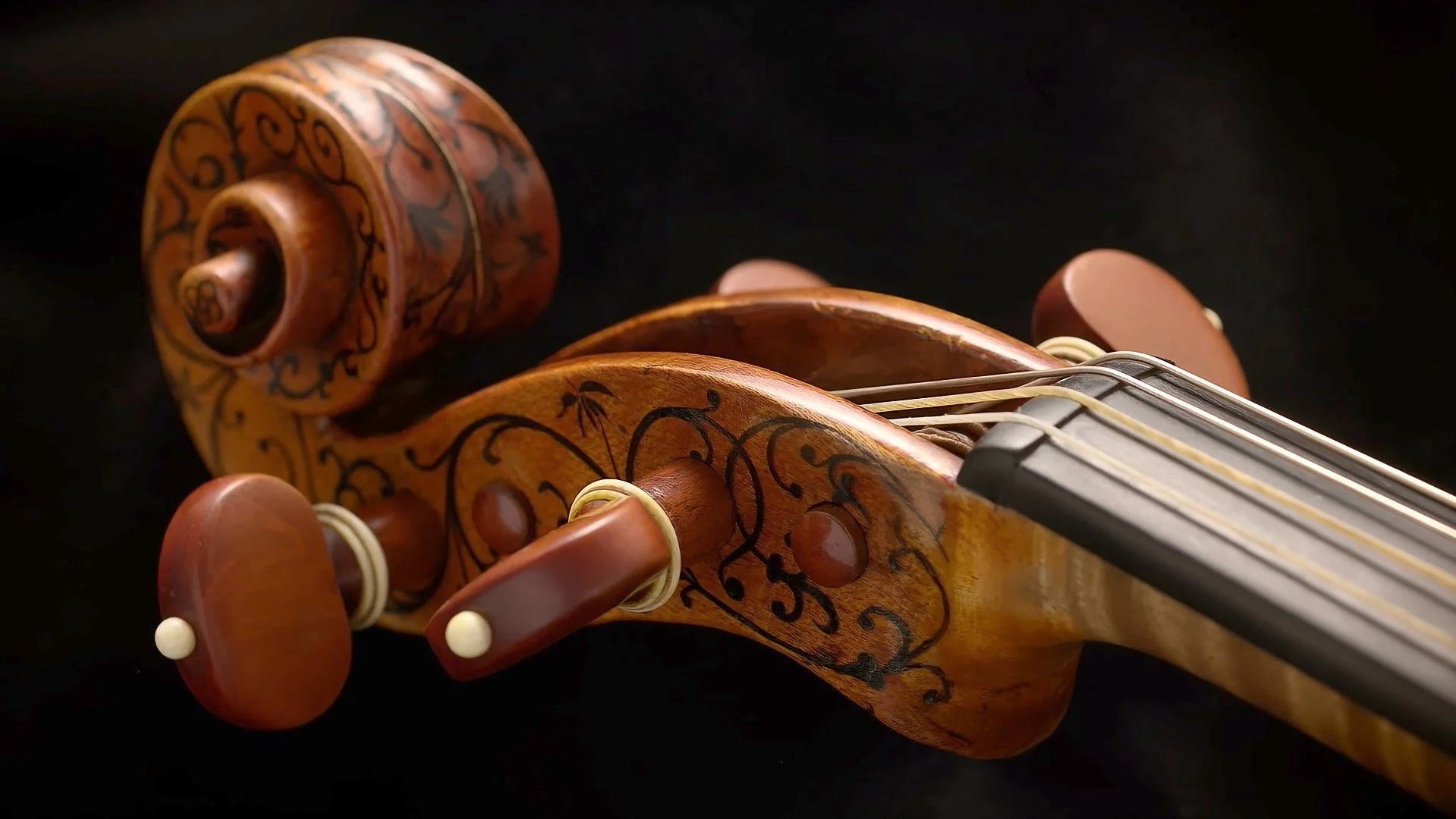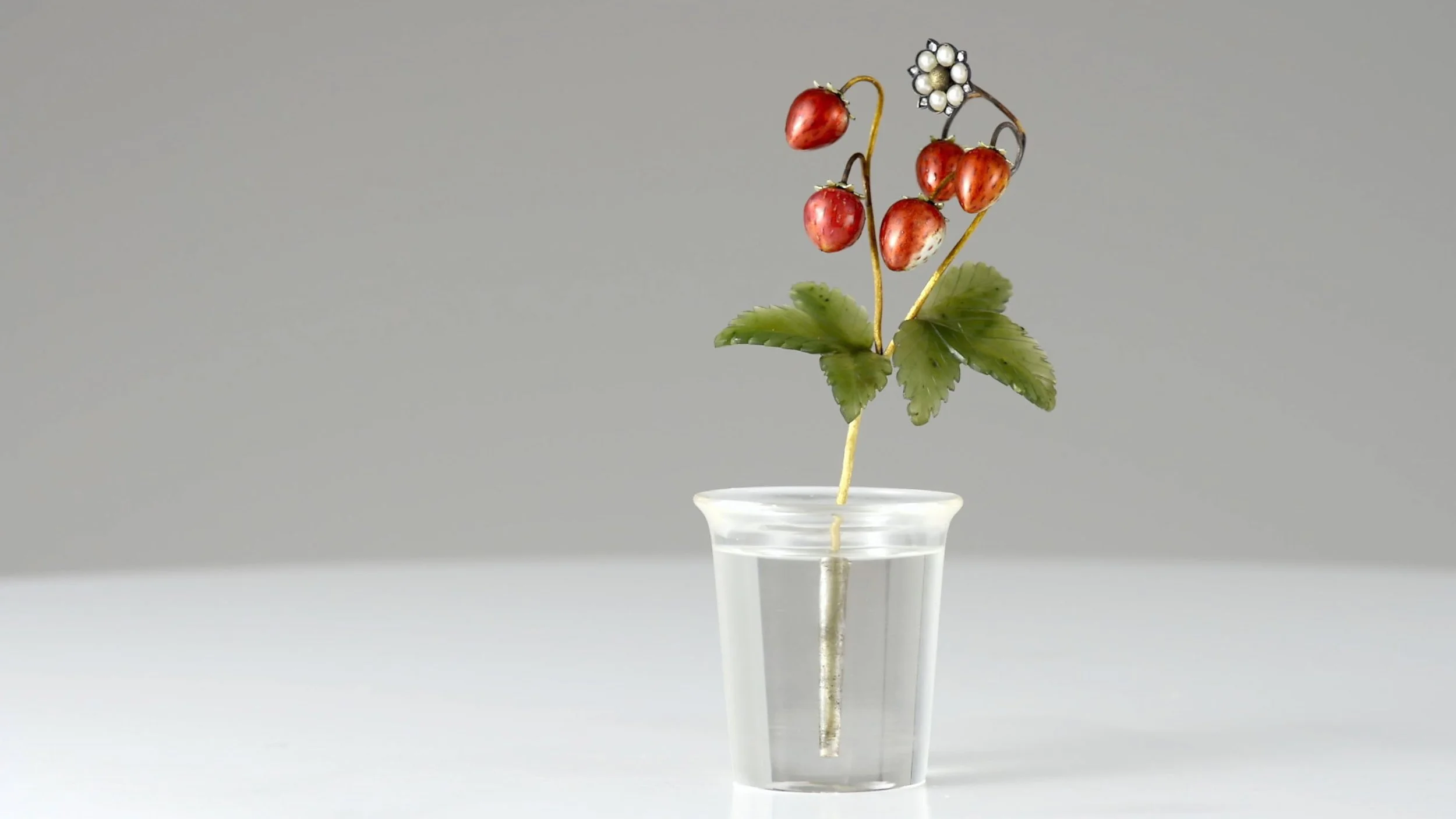Decorative Arts
A PAIR OF MAGNIFICENT LOUIS XVI ORMOLU-MOUNTED BEAU BLEU SEVRES PORCELAIN AND MARBLE 'VASE' CLOCKS
THE CASE ATTRIBUTED TO PIERRE-PHILIPPE THOMIRE, THE MOVEMENT BY JEAN AMANT, CIRCA 1785.
With their finely chased gilt-bronze mounts adorning Sèvres porcelain vases, this magnificent pair of clocks is amongst the most ambitious and luxurious examples of ormolu-mounted objects conceived in France in the late 18th century. Originally part of a set of four commissioned to adorn a single room, each timepiece featured a distinctive mechanism and functioned as candelabra as well as ice coolers, reunited in intricate neo-classical cases attributed to Pierre-Philippe Thomire (1751-1843). In his capacity as designer and bronzier, he would have overseen this creation for an important patron, probably a member of a European Royal court. The clocks then reappeared in the collection of Sir Max Michaelis (1852-1932), a South African financier, mining magnate, benefactor and patron of the arts in the 19th century and have remained with his descendants until the present day.
Estimate £250,000 - £350,000. Price realised £491,500
Sold by Christie’s, July 2023 in London.
A CHARLES I SILVER INKSTAND OR STANDISH
THE SEVEN LIBERAL ARTS INKSTAND
This extraordinary inkstand is not only a magnificent example of an exceeding rare 17th century form, but also a virtuoso display of the finest chasing of the time. Monumental in size, it is over twice the weight of the largest standishes recorded in the surviving records of the Royal Jewel House for the period. Struck with the mark of the London assay master and goldsmith Alexander Jackson (d.1670), the chasing is of a standard and inventiveness not seen in the work of London goldsmiths at the time. The quality of the chasing, in the auricular style, the originality of the allegorical scenes and the sophistication of its conception, all point to the Utrecht born silversmith Christiaen van Vianen and his workshop as the authors of the piece. The arms engraved on the inkstand record the ownership of the piece from the early 18th century, however the original patron remains unknown. The complex and intellectual iconography of the inkstand or standish and its creation by a foreign goldsmith who was employed by the King, points to either a royal patron or a high standing member of the Court, such as the Earl of Northumberland, for whom van Vianen is known to have worked.
Estimate £1,000,000 - £1,500,000. Price realised £1,942,500
Sold by Christie’s, July 2021 in London.
ANTONIO STRADIVARI, THE 'HELLIER' VIOLIN
CREMONA, 1679
The ‘Hellier’ Stradivarius violin, made by Antonio Stradivari in 1679, is an extremely rare and important example of Stradivari’s work. This magnificent fully-inlaid example is one of the finest Stradivarius instruments in existence.
Antonio Stradivari (1644-1737) is the most famous and revered Italian luthier, whose approximately 500 surviving violins are widely regarded as the finest and most valuable ever made, with previous sales fetching in excess of US$15 million. Stradivari’s supreme level of craftsmanship coupled with his inexhaustible artistic creativity resulted in instruments to which all subsequent luthiers have aspired, and which have been sought after by the leading musicians of each generation.
Estimate £6,000,000 - £9,000,000
Offered by Christie’s, July 2022 in London.
A MONUMENTAL LOUIS XV ORMOLU AND MEISSEN AND FRENCH PORCELAIN CLOCK
CIRCA 1750, THE PORCELAIN FIGURES ATTRIBUTED TO J.J. KÄNDLER, THE FLOWERS VINCENNES AND SEVRES PORCELAIN, MOST SOFT PASTE; THE CLOCK MOVEMENT BY EDME-JEAN CAUSARD, PARIS
THE MARQUISE DE LANGEAC APOLLO CLOCK
This magnificent clock, with its spectacular depiction of Apollo driving the Chariot of the Sun, borne aloft by billowing ormolu clouds, is one of the largest porcelain-mounted clocks known to survive from the 18th century and a true tour de force in its dramatic combination of Meissen porcelain figures by Kändler and dynamic, rococo gilt-bronzes.
Estimate £150,000 - £250,000. Price realised £302,400
Sold by Christie’s, July 2023 in London.
AN IMPRESSIVE AND LARGE IMPERIAL PORCELAIN VASE
BY THE IMPERIAL PORCELAIN FACTORY, ST PETERSBURG, PERIOD OF NICHOLAS I (1825-1855)THE MARQUISE DE LANGEAC APOLLO CLOCK
The Imperial Porcelain Factory started to produce large vases for imperial presentations and for the decoration of palaces during the reign of Emperor Alexander I in 1801-1825. The tradition was then continued by Emperor Nicholas I, who commissioned and awarded a remarkable number of vases. Under his patronage, the production of the factory reached its apogee, and works from this period are the finest examples of palace and presentation vases produced.
Many of the vases produced by the Imperial Porcelain Factory were decorated with copies of Old Master paintings. Consistent with the European tradition of using academic paintings as design sources, the middle section of the vase was treated by factory artists as a canvas on which to showcase their work. The paintings were typically scaled-down, faithful copies of original works in the Imperial Hermitage, the Academy of Arts or from collections in the imperial palaces in the vicinity of St Petersburg.
Estimate £200,000 - £300,000. Price realised £400,000
Sold by Christie’s, June 2021 in London.
A RARE GOLD-MOUNTED ENAMEL, NEPHRITE AND ROCK CRYSTAL STUDY OF WILD STRAWBERRIES
BY FABERGÉ, ST PETERSBURG, CIRCA 1900, SCRATCHED INVENTORY NUMBER 10061
Fabergé's everlasting flower studies were popular among the Russian Imperial family and aristocracy, who were known for their love of flowers and knowledge of botany. St Petersburg was home to countless florists, some of whom supplied Imperial palaces with fresh flowers transported on ice by train from France. With her purchase in 1895 of a yellow rose, Empress Alexandra Feodorovna was the first member of the Imperial family to purchase a flower study by Fabergé. She was soon followed by Empress Maria Feodorovna, her sister Queen Alexandra of England and Grand Duchess Maria Pavlovna.
The inventory number on this intricate study of wild strawberries is '10061'. Another model of wild strawberries, purchased by Dowager Empress Maria Feodorovna in April 1911 for 250 roubles, is recorded in the ledgers under number '10062'. It is also known that Grand Duchess Maria Pavlovna, who was an avid collector of Fabergé flowers, had two wild strawberry studies in her collection. Another study of wild strawberries by Fabergé is part of the Royal Collection, see C. de Guitaut, Fabergé in the Royal Collection, London, 2003, no. 126.
Estimate £200,000 - £300,000. Price realised £325,000
Sold by Christie’s, November 2021 in London.





